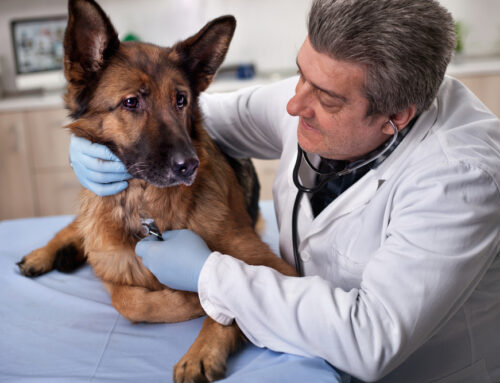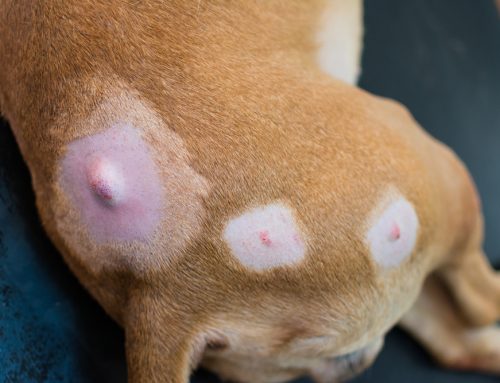Part of responsible pet ownership is spaying or neutering your pet, not only for the health benefits, but also for the good of the overall pet community. While each pet is different, we recommend spaying or neutering your pet between 3 and 6 months of age, before they reach maturity and can begin reproducing. When scheduling your four-legged friend’s surgery, rest assured they’ll be in excellent hands, and will soon benefit from the following seven important reasons for spaying and neutering pets.
#1: Spaying a pet before the first heat cycle greatly reduces mammary cancer risk
Evidence provided by the American College of Veterinary Surgeons shows that spaying your female pet before their first heat cycle can reduce their mammary cancer risk. Cats spayed before 6 months of age have a seven-times reduced risk of mammary cancer development. A dog’s risk for developing a mammary tumor is 0.5 percent if spayed before their first heat, 8 percent after their first heat, and 26 percent after their second heat.
A pet who is spayed later in life can develop mammary cancer, despite sterilization. In female dogs, 50 percent of mammary tumors are benign and 50 percent are malignant; however, few are fatal. In contrast, more than 85 percent of mammary tumors in cats are malignant, and most are aggressive.
#2: Neutering a pet prevents testicular tumors and cancer
Neutering your male cat or dog removes the potential for painful testicular tumors and cancer. In addition, neutering helps reduce the possibility of prostate problems, like infections, abscesses, and cancerous tumors.
#3: Spaying a pet removes the potential for a deadly uterine infection
Female pets who go through heat cycles without becoming pregnant, or who give birth, can develop pyometra, a life-threatening uterine infection. After a heat cycle or birthing a litter, your female pet’s uterus struggles to return to normal, and is vulnerable to bacterial infections because of its weakened state. As bacteria attack the uterus, a severe infection can develop, and bacteria can also leach into the bloodstream, causing potentially deadly sepsis in your pet. Spaying removes your pet’s uterus, and the potential for a pyometra.
#4: Neutering a pet helps prevent or reduce unwanted male behaviors
Male cats and dogs can develop some unwanted behaviors driven by their hormones that can damage your bond if they do not stop. By neutering your pet, you can experience the following benefits, because they no longer have hormonal urges:
- Reduced urge to roam
- Less desire to mount other animals, people, and objects
- Reduction, or elimination, of urine-spraying and marking behavior
- Reduced territorial and inter-pet aggression, particularly with other males
Keep in mind that while neutering can greatly reduce your male pet’s unwanted behaviors, also providing positive-reinforcement training will give you the best results. So, if your intact male dog is prone to mounting your spayed female dog, the cat, and your family members, neutering will help reduce this urge, but training for appropriate behaviors is also necessary for complete eradication of this action.
#5: Spaying keeps your pet from going through a heat cycle
If you’ve had an intact female cat go through a heat cycle, you likely wondered why you waited so long to have her spayed. Many pet owners complain about irritating and obnoxious behaviors of their female pets in heat, so scheduling surgery before their first heat cycle can completely eliminate these issues. By spaying your female pet, you won’t have to deal with:
- Bloody vaginal discharge
- Excessive vocalization at all hours of the day and night
- Overly needy behavior
- Potentially aggressive behavior
#6: Spaying and neutering pets reduces the urge to roam and find a mate

Unfortunately, not every pet in our area is microchipped. Therefore, if your unidentified pet dashes out the door when their hormonal urges hit, they may become lost, with little hope of finding their way home. Spaying or neutering your pet can help prevent the possibility of losing them. Removing their hormonal drive to mate will make your pet less likely to roam, and therefore a better behaved family companion.
#7: Spaying and neutering helps control the pet overpopulation problem
Guam has a significant stray pet population, and by spaying and neutering family pets, we can work together to reduce the homeless pet population, and ensure each pet has a family. Also, stray pets can transmit many diseases to other pets—and people—so taking every step we can to reduce this possibility is essential for a healthy community.
For answers to your questions about the spaying or neutering procedure for your pet, contact our Guam Pet Hospital team.








Leave A Comment